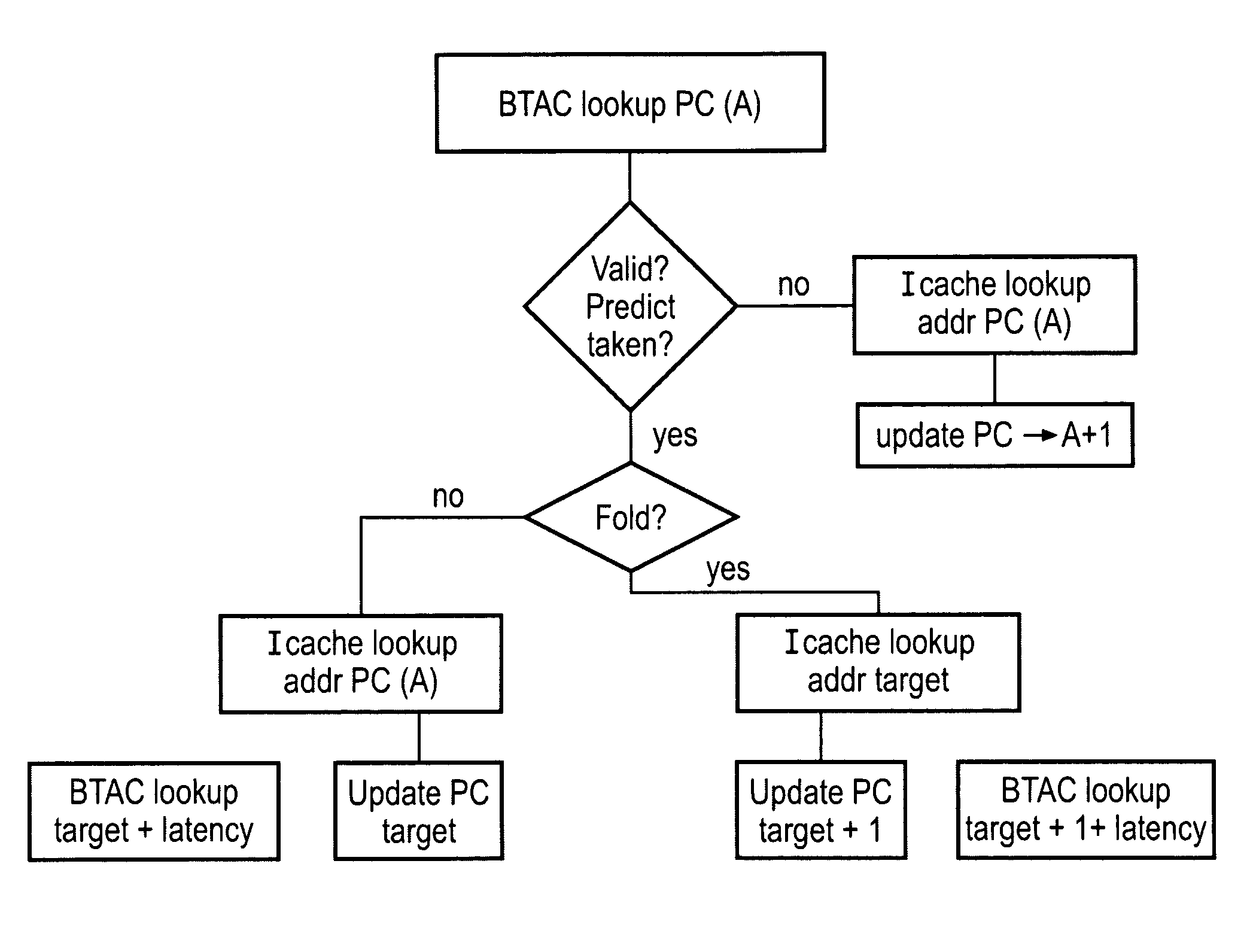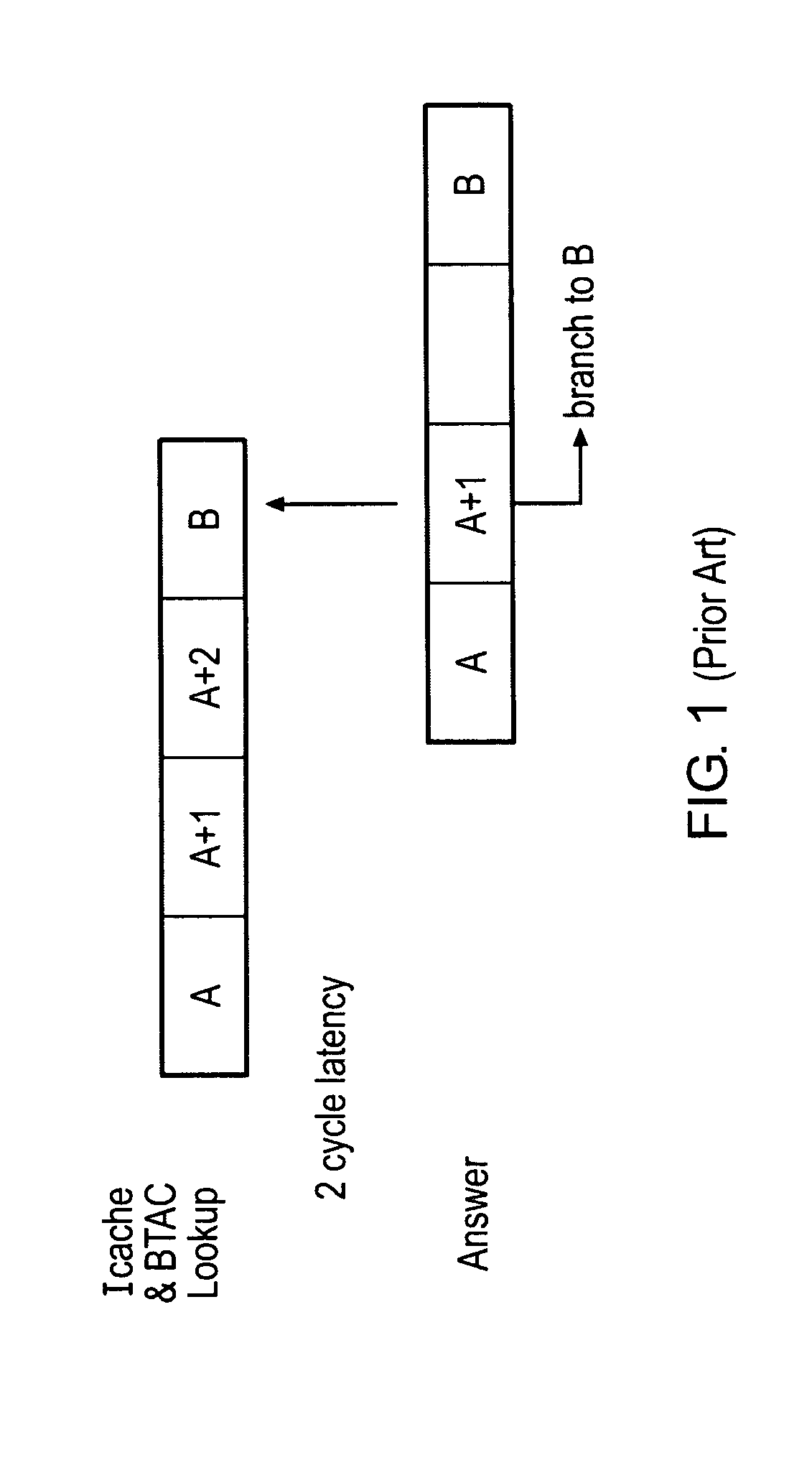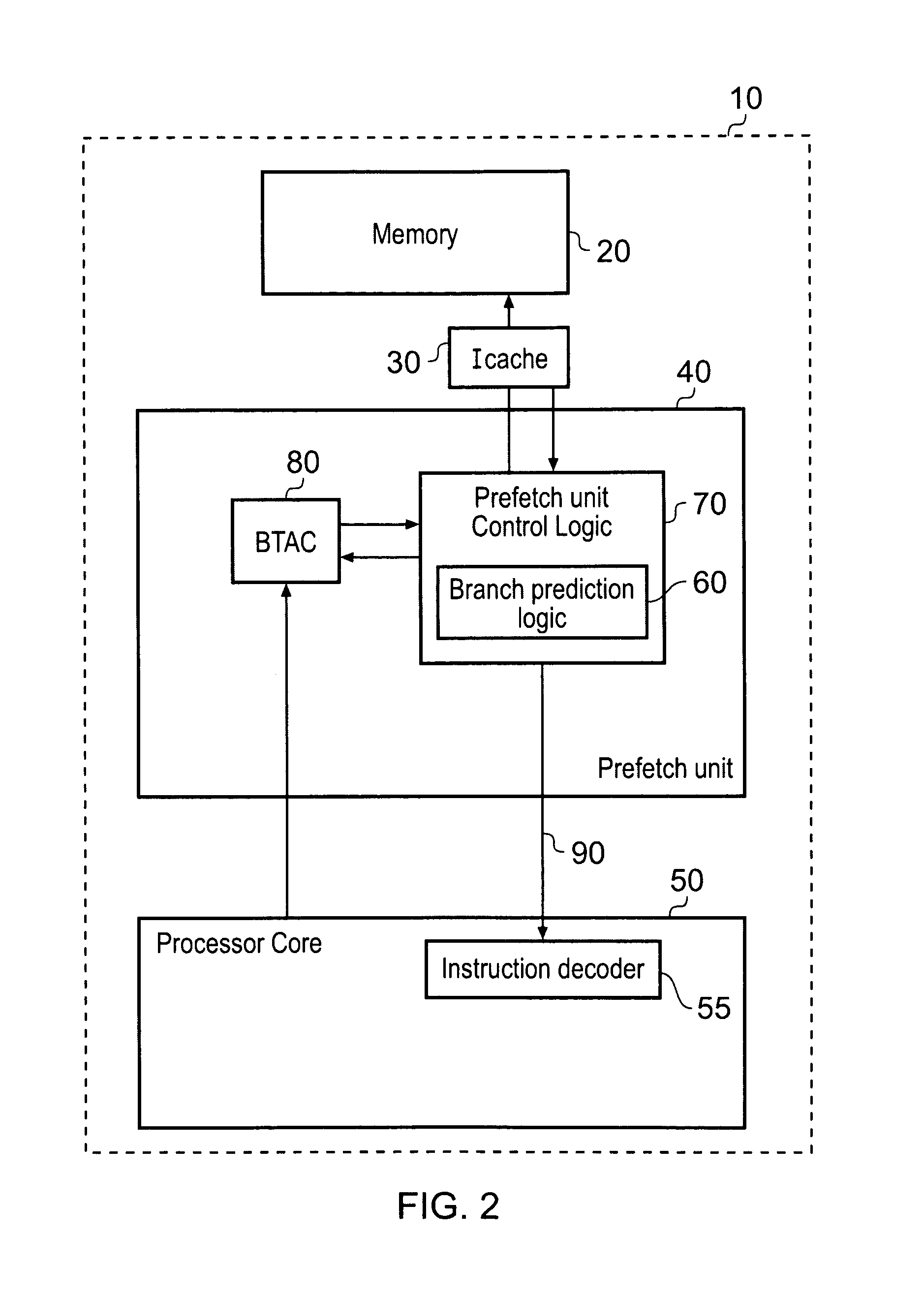Early branch instruction prediction
a branch instruction and prediction technology, applied in the direction of specific program execution arrangements, instruments, program control, etc., can solve the problems of system latency, unnecessary data access, and high power consumption
- Summary
- Abstract
- Description
- Claims
- Application Information
AI Technical Summary
Benefits of technology
Problems solved by technology
Method used
Image
Examples
Embodiment Construction
[0039]FIG. 2 shows a data processing apparatus 10 according to an embodiment of the present invention. Data processing apparatus 10 comprises a memory 20. Although in this embodiment memory 20 is shown as being within data processing apparatus 10 it should be understood that this memory 20 could be located outside of the data processing apparatus 10. The apparatus also comprises an instruction cache, I-cache 30, operable to store instructions and a prefetch unit 40. Prefetch unit 40 is operable to fetch instructions from the instruction cache 30 or if they are not present in the instruction cache from memory 20 and to route these instructions to processor core 50 and in particular to instruction decoder 55 within processor core 50.
[0040]Within the prefetch unit 40, dynamic branch prediction logic 60 is provided to assist the prefetch unit in deciding what subsequent instructions to retrieve for the processor core 50. This dynamic branch prediction logic 60 is provided as part of the...
PUM
 Login to View More
Login to View More Abstract
Description
Claims
Application Information
 Login to View More
Login to View More - R&D
- Intellectual Property
- Life Sciences
- Materials
- Tech Scout
- Unparalleled Data Quality
- Higher Quality Content
- 60% Fewer Hallucinations
Browse by: Latest US Patents, China's latest patents, Technical Efficacy Thesaurus, Application Domain, Technology Topic, Popular Technical Reports.
© 2025 PatSnap. All rights reserved.Legal|Privacy policy|Modern Slavery Act Transparency Statement|Sitemap|About US| Contact US: help@patsnap.com



